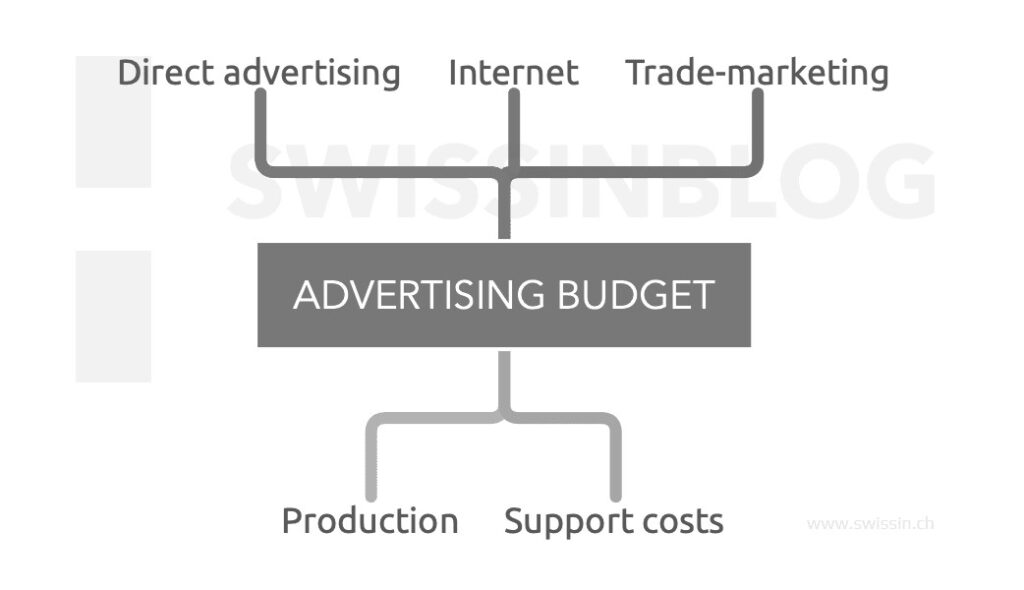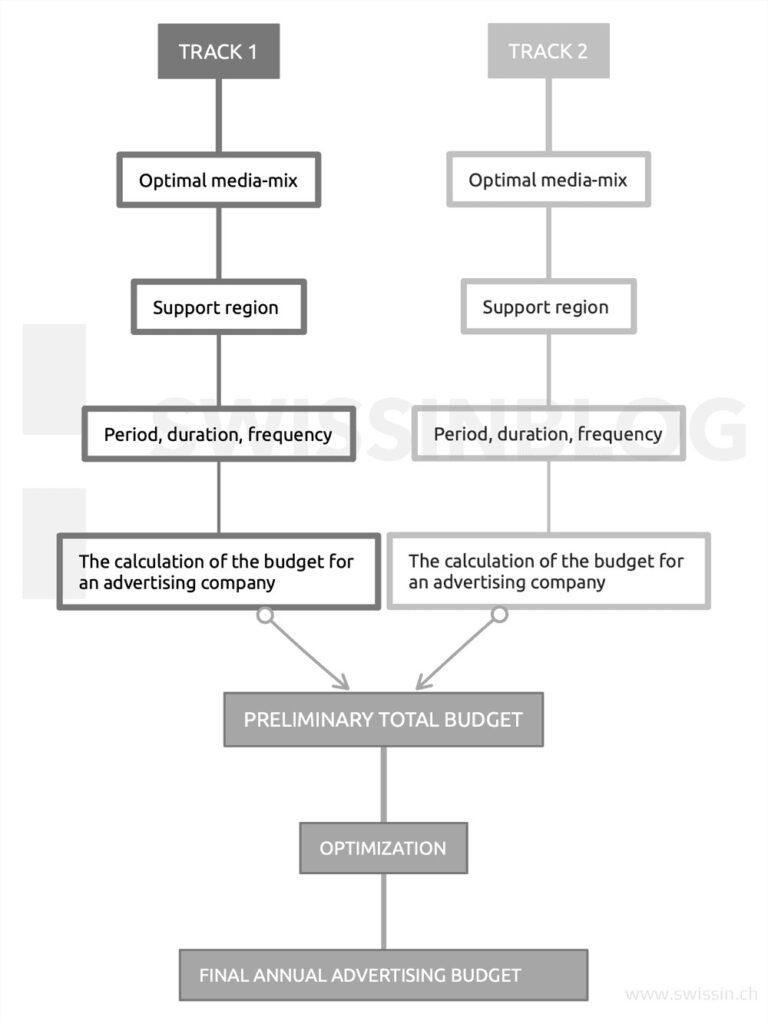—
This article describes the process of developing and forming the company’s advertising budget in the smallest details. In the article, you will find not only information about what actions it is necessary to begin planning advertising investments, but you will see with examples the use of best methods for calculating the size of the company’s marketing expenses.
After reading this material, you will be able to calculate the necessary marketing budget to promote your products or services from scratch, even if you do the first time.
THREE RULES
The calculation of the advertising budget should be fully justified. Otherwise, you will merely waste the limited resources of the company aimlessly. There are “3 golden rules of advertising investments” that will help you to wisely approach the process of planning a marketing budget for an enterprise.
Rule number 1: Assessment of the financial capabilities of the company.
Before you make a forecast of the advertising budget, you need to assess the maximum investment opportunities of the company.
For this: Estimate the level of income in each month throughout the year. The estimate is similar to the “rough” sales forecast based on available statistics. In other words, relying on the company’s historical sales data, plan how much sales the company will bring next year, taking into account seasonality.
If the sales volume varies from 15,000 to 40,000 Euros, for budget planning, it is better to take the minimum value – 15,000 Euros. The next step is to determine the size of the company’s expenses in each month of the year.
These can be: the cost of purchasing materials, paying staff, renting space, tax payments, etc.
Important: Do not exaggerate, try to assess the most reliable, and preferably the minimum level of income.

Table 1: Calculation of the possible size of advertising investments.
The result of the first two actions is to obtain an estimated amount of the company’s future profits, which can be invested in future growth. Now identify all the priorities for your business next year, in other words, key sources of growth and business opportunities. Marketing is only one of the directions for future investments. It may happen that the priority at the moment is to upgrade equipment or to direct all resources to the development of new technologies, or personnel training.
Rule number 2: To assess the critical areas of support.
When the boundaries of the marketing budget are defined, you can proceed to the next planning stage: determine the products that need to be developed through advertising and marketing activities. The basic principles that will help identify priority areas:
We need to maintain only a quality product, which minimised all critical flaws. Otherwise, all investments in the development of product knowledge will turn for the company an increase in negative feedback from the target audience:
– We need to maintain a product to which the target consumer has access. Advertising a product that cannot be bought by the client is useless;
– Products that are at the stage of introduction or growth need a higher level of investment. Products that are in a recession stage require minimal support and, above all, an update;
– Products of fast-growing profitable segments need a higher level of investment. Products in stagnant markets need minimal support;
– Advertising a product with a strong competitive advantage is more effective than supporting a product without distinctive characteristics.
(Example) Assessing the direction of investment in budget marketing and advertising:

Table 2: Evaluation of critical areas of marketing support.
Business lines in this table are the company’s products: specific product lines, key new product launches, support for top locomotive products, strengthening the competitiveness of certain goods or services.
Rule number 3: Determine the purpose of advertising support.
After identifying key areas for investment, it is vital to set goals to support selected areas of business. We will consider an example of goal setting in a future article: How to set and manage marketing goals in a company correctly.

WHAT MARKETING EXPENSES INCLUDED IN THE BUDGET?
Before proceeding to the calculation of the advertising budget, let us clarify its structure. In practice, there are five main items of marketing costs:

“Direct advertising”: this section includes the costs of paying for the actual placement of an advertisement for a product on TV, on the radio, in the press, in print or outdoor advertising.
“Production”: this section includes the costs of the production and creation of promotional materials. For example, the production of commercials, print advertising poster, design layout of advertising in the magazine, payment for influence marketing, etc.
World practice: the “production” section should not exceed more than 10% of the total advertising budget.
“Internet”: in connection with the massive growth of the importance of the Internet in the effectiveness of marketing communications, it is customary to single out this item of expenditure separately. It includes the cost of creating and promoting the site, creating content, promotion on social networks, hosting and maintenance of the site, contextual advertising.
“Auxiliary materials”: the court includes the production of small supplies for marketing activities: brochures, leaflets, catalogues for customers, catalogues for sales personnel, branded pens, envelopes.
“Trade Marketing”: in this section of the budget, marketing expenses for promotions aimed at the end user and for shares for resellers, as well as the production of POS materials and commercial equipment are prescribed.
An example of what an advertising budget might look like with a breakdown (by main sections):

STEP-BY-STEP INSTRUCTIONS FOR CREATING A BUDGET.
So now we have all the information for finalising our document. Namely: – We know the maximum amount of investment that the company is ready to give us to support the product;- We know the main products of companies that need advertising support;- We know what goals we want to achieve for each product;- We know in what form the budget should be formed. Now it is time to calculate the total advertising budget of the company for the next year.The budget development process is as follows:

The costs of marketing programs are calculated for each direction separately, then they are combined into a single advertising budget and are optimised taking into account the importance of the project. Knowing the goals that the company plans to achieve for each product, we can choose the most appropriate channels of communication or the so-called media mix.
The next step is to determine the strength of the advertising pressure, which is characterised by indicators: the period and duration of support, the frequency of the display and the target coverage of the advertising message. Depending on the values of these indicators, the budget for each advertising campaign is calculated. After combining the budgets of all advertising campaigns, we get a preliminary budget figure, which must be adjusted by the following principle:
– Do not exceed the maximum amount of investment, which we calculated at the very beginning;
– To be a visualisation of the key priorities of the company: there should not be a situation in which a high proportion of investments goes to the most non-priority projects of the company;
– For each advertising campaign, the payback should be visible (of course, sometimes large companies can afford investments that will pay off the project for several years, but if we speak in the realities of small business, then the payback of the advertising campaign should be within one year, ideally not exceed 6 months).
ALTERNATIVE METHODS OF CALCULATING THE ADVERTISING BUDGET.
The above-described method of developing an advertising budget is called the “method of setting a budget for marketing against a goal”, is the most common method and is used by all leading companies in the market.In practice, there are four more ways to determine the budget for marketing:
– Gross sales percentage;
– Based on historical data;
– Competitive parity;
– The ratio of “share of voice” and market share.
Percentage of gross sales.
The essence of the method is as follows: the company’s advertising budget equals a certain percentage of the company’s turnover over a fixed period. The budget can be calculated as % of annual sales, as % of sales for any reporting period (quarter, month), as % of sales of goods only in the period of the campaign. This percentage is called Advertising to Sales and is determined on the basis of the company’s expert assessment. In world practice, there are benchmarks for this indicator in the main sectors:
– Automotive industry: less than 1%;
– Retail network: 2.5%;
– Business services industry: 3.5%;
– New business development (Startups): 5-7%;
– Consumer Goods Markets (FMCG): $ 8-10;
– Pharmaceutics: 20%.
The method of determining the budget based on historical data
The method is based on accumulated experience to predict the effectiveness of future advertising campaigns. Knowing the effect of a similar advertising campaign in the past, we can correctly make a sales forecast and calculate the marketing budget. It is one of the most risk-free methods based on the experience of the company.
In this approach, the most difficult is to systematize the available information about the campaigns: the campaign period, the competitive environment during the campaign period, brand, type of advertising message (educational campaign, information about the new attribute of the product, image formation, etc.), complexity of the advertising message, product novelty, etc.
The method is not suitable for absolutely new products and launches; it is also challenging to use with a significant change in the competitive environment in the market.
The method is the ratio of market share and voice share.
This approach is based on the proven dependence of the “share of voice” advertising campaign and the market share of the product in the industry. This approach allows us to determine what advertising pressure must be planned to achieve the target market share of the product.
The method of competitive parity.
The method is based on a competitive analysis of market share and advertising costs of key competitors:
– Calculate the ratio of advertising costs and market share of key competitors;
– Determine the target market share for the supported product at the end of the support period;
– Using the ratio of competitors, we calculate the budget for the support of the company’s goods.
Limitation of the method: the lack of open information about the costs of competitors; when using parity with competitors, it is necessary to take successful competitors; does not take into account the possibility of cost optimization (perhaps, by optimizing the costs, the goals set can be achieved with the help of lower investments, improving the competitiveness of the company in the segment); does not take into account the difference in the quality of advertising messages.
IMPORTANT:
The advertising budget for marketing – the annual amount of investments to support the company’s goods, documented with a monthly breakdown of budget amounts by specific items investing. Compiled once a year as part of annual strategic planning and is an integral part of the marketing plan.
0 Comments